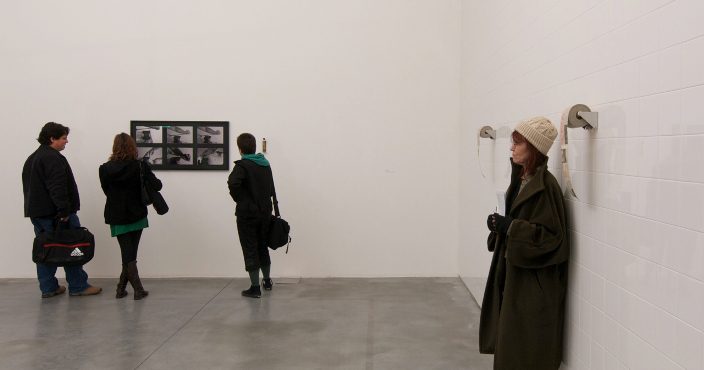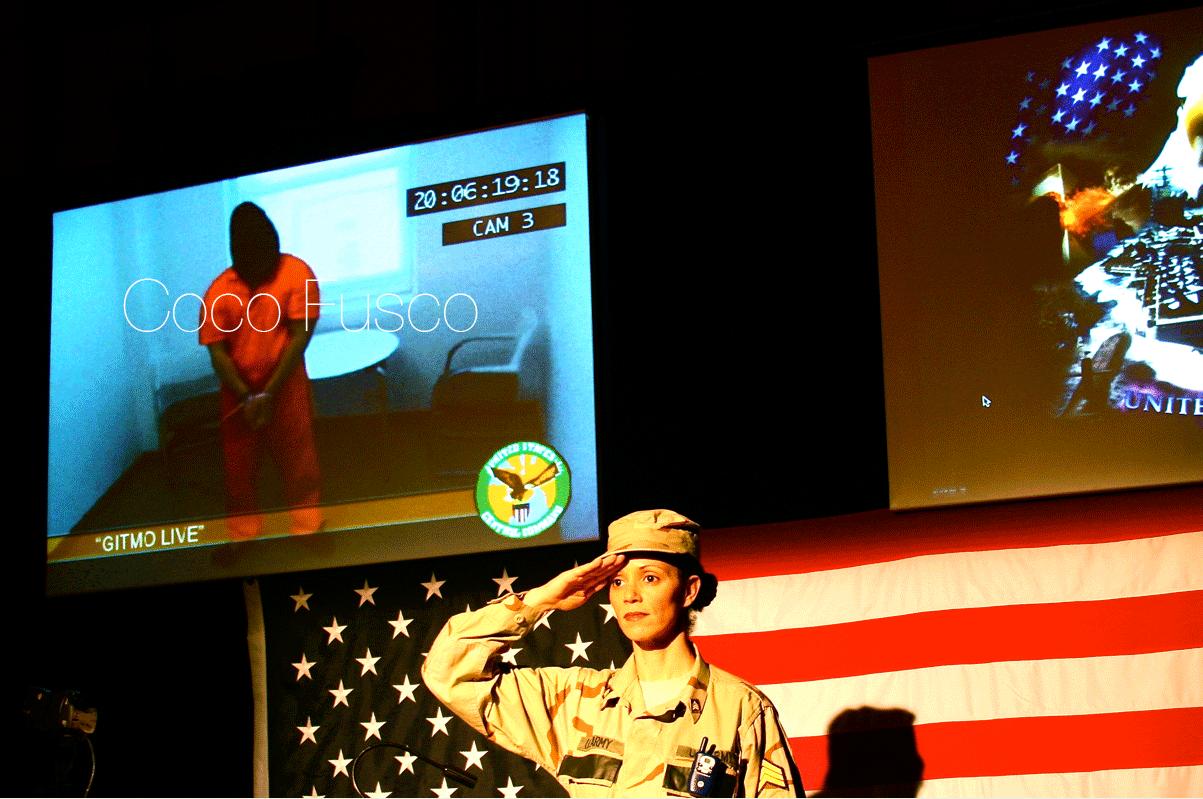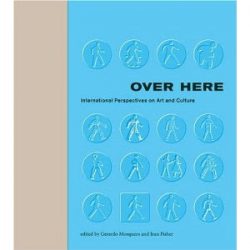- Venue
Stuart Hall Library
- Artists
Jean Fisher, who died in London on 18 December 2016, was an artist, a teacher and a writer on contemporary art. Her research explored the legacies of colonialism and the impact of globalisation. A former editor of Third Text, she edited the writings of Jimmie Durham (A Certain Lack of Coherence, 1993) and of Lee Ufan (Selected Writings, 1996).
Iniva is indebted to Jean for her collaboration and involvement with its projects and publications including a series of her essays published as Vampire in the Text, Narratives of Contemporary Art, (2003, London, Iniva).
Jean Fisher edited the anthology Global Visions: Towards a New Internationalism in the Visual Arts (1994, London, Kala Press & Iniva). Jean’s editor’s note for the publication is reproduced here in testament to her perception, erudition and originality of thought.
“In western societies, how we visualise the world and our relations to it have become increasingly less a matter of our individual creative initiatives than of the influence of technologies and the institutions – the media, the corporation, the academy – which codify information. We are constantly at risk of becoming hostage to received ideas whose truth cannot be subjectively evaluated. Like cultural productions, concepts rapidly become commodified, reduced to their most trivial meaning, or, more sinisterly, hijacked by the interests of whichever agency has control over the means of dissemination. Whatever knowledge a concept is concerned to interrogate or expand thereby becomes atrophied before it can be adequately debated and acted upon.
In some respects, this appeared to be the fate of ‘multiculturalism’ – a concept in potential, full of promise for a brave new world of cultural harmony and integration. Yet, economic and political considerations aside, it was disfigured at the outset by that very same promise – a narrowness of vision and interpretation derived from the desire of western thought to structure a world devoid of all contradictions, which leads it into staging the world according to its own values and ideals without regard for the humanity and knowledge of others. ‘Multiculturalism’, as interpreted and practised by western institutions, has been their response to pressure from the postcolonial world to acknowledge in some way the diverse histories and effects of modernity’s vast global migrations to and from centres of power and their peripheries and the consequent multiple communities of the 20th century metropolis. This in itself, however, is a narrow interpretation that tends to homogenise complex global cultural relations. As Hou Hanru writes here, there is a monopoly in the multicultural debate on the colonial master-slave axis, “as if the significance of any ‘multiculturalism’ is decided by the extent of its relation to this axis”. It is an interpretation moreover, that seems to many to be a redemptive exercise since despite the increased traffic through the art institutions of cultural products by the formerly excluded, it has done little to shift the old binary oppositions of western self and other and the structures which sustain them. Aesthetic theory and critical debate – where it exists at all – are still woefully inadequate to conceptualise the complexity and heterogeneity of contemporary art practices which do not comfortably reflect a narcissistic Eurocentric identity: thus, as Hou says of the western critical response to Chinese art, ignorance of modern history in China and a ‘West-centric’ mentality, perceives the work as derivative of western styles: hence, ‘multiculturalism’ is seen by western commentators “as a kind of ‘regionalism’ or ‘nationalism’ while the artist understands it as ‘internationalism’, never refusing international exchanges and mutual influences!” ‘Multiculturalism’ remains stained above all by the West’s failure to engage in a dialogue of equality with its neighbours and to relinquish its control over meaning production. The West, in short, never ceases in its attempts to re-centre itself as the privileged subject of knowledge.
‘New Internationalism’ comes hot-foot in the wake of ‘multiculturalism’, but, as this collection of papers cautions, if this is not to become another buzz-word appropriated and twisted by the existing structures of power to sustain their own positions, we must interrogate with care what we want this to mean – whether, indeed, it can have any meaning; and if it does, what we want such a notion to achieve; and what action must be performed to secure its aims.
In the first instance, this volume is an attempt at dialogue – a selection of voices coming from so-called centres and peripheries, from institutional spaces and independent positions, none to be regarded as fixed or monolithic, from the pragmatic and the poetic – in order to discover not only the points at which communication is possible, but also the points at which we must recognise and accept an utter incommensurability. For Sarat Maharaj, the international space must be “[reindexed] as a scene of translations” in which the limits of translatability of the other must be acknowledged if its consequent hybridity of productions is to avoid becoming a privileged term, “swapping places with the notion of stylistic purity”. Contradiction and ‘difference’ need to be re-conceptualised as positive values in the move towards cultural transformation: we need, as Gilane Tawadros points out, to take on the “dynamics of change” as distinct from the Eurocentric notions of progress or evolution.
In the second instance, these are voices which privilege questions concerning the practice and theory of art. Useful though interdisciplinary studies have been to an understanding of identity politics and the socioeconomic context of cultural productions, the strategies of anthropology, sociology and so forth nonetheless fail to account for the particularity of critical aesthetic practice, the complex role of historiography in the evaluation of art, the relations between art and its audience, and the nature of the art ‘object’ as a material expression of both an individual vision and a collective experience that exceeds its status as a cultural sign. In relation to the work of artists hitherto unacknowledged by the western mainstream, an obsession with ethnic or racial background, and the intransigent racialised hierarchies that accompany it, has led certain cultural disciplines – as Everlyn Nicodemus says of the West’s anthropologised relation to African art – to a reduction of art to a “symbol of collective identity”, which denies to ‘other’ artists precisely that individuality and specificity of vision upon which the genealogy of western art is founded. Gordon Bennett likewise warns that the ‘othered’ artist too readily becomes trapped in a representative role of a Eurocentric racialised identity that elides the complex play of identifications and roles in which we are all involved and which we are all entitled to express. The work of ‘other’ artists risks becoming ethnicised to the point of caricature, a situation in which, as Gerardo Mosquera has said of Latin American art and Hal Foster points out in relation to current curatorial strategies, artists may collude in order to find an institutional space. Another perspective is needed, one which, as Guillermo Santamarina suggests in his discussion of the internal and external stereotyping of Mexican cultural productions, takes aesthetic practice as its privileged object, and recognises that the aim of art, at its most altruistic, has been to test the image of the world – to un-name it so that it may be constantly reinscribed and transformed.
We shall begin, therefore, with ‘naming’ in order to ‘un-name’, in order to forestall commodification!: to say at the outset, with Geeta Kapur, that “a ‘new internationalism’ is not a matter of consensus – the term should be dismantled”. Internationalism itself has never been a matter of consensus. As pointed out by Rasheed Araeen, Olu Oguibe and Mosquera, internationalism has always referred exclusively to a European-European diasporan axis of political, military and economic affiliations (reinforcing Hou’s description of ‘multiculturalism’ as reflecting a colonial “master-slave axis”). This entrenched and dominant axis creates, in Mosquera’s words, “zones of silence” elsewhere, making it difficult for lateral communications and other affiliations to take place. Araeen and Oguibe remind us that the present initiative is only the most recent in a history of such attempts at cross-cultural dialogue which have been erased from “established narrations of cultural practice in Britain… [and which failed] to overwhelm the deep-seated and firm structures which we interrogate” (Oguibe). For Araeen, where the work of ‘others’ has been acknowledged it has not been on the basis of integration or equality: “…different roles have been provided for different artists based on racial or cultural differences.”
For Jimmie Durham, one cannot think ‘internationalism’ without addressing the problem of ‘nationalism’ as a tool of nation-state “terrorism and insularity”. It is undoubtedly within the interests of state and corporate power to engineer a society of ideologically homogeneous citizens united in a passive consumerism whose fears and desires can be manipulated and contained. The construction of mythic national narratives is one such form of manipulation, serving to instil a sense of communal identity through the promotion of an idea of shared histories and values. Art becomes implicated in this system of significations in so far as it is linked to the state’s investment in ‘national heritage’. Such patrimony has historically reflected the desired national identity of the hegemonic elite, against which the unpredictable, the heterogeneous, the dissenting, the ‘culturally different’, are seen as a threat to its coherence. If this construct seems appallingly redundant given the increasing multi- and mixed-‘racial’ composition of our metropolises throughout this century, it continues to exert a powerful pressure on institutional thinking, and the collecting policies of our ‘national heritage’ museums.
The situation has demanded a two-pronged attack on the philosophical parameters that govern both the historiography of art and curatorial practice as the legitimating organs of cultural production. What is needed is an interrogation of what Judith Wilson calls “historical amnesia and cultural essentialism”. Like Everlyn Nicodemus, Wilson foregrounds the fact that influence does not, in practice, follow a unidirectional pathway, but that amnesia and essentialism conceal the cross-cultural fertilisations which have always taken place and which give any culture a renewed vitality. Without this recognition, we are left with the ‘double standards’, or Araeen’s ‘differentiations’, which maintain the subordination of the non-white artist. As a ‘mainstream’ curator, Elizabeth Sussman outlines the transforming trajectory of her own thinking on the meaning of ‘nationalism’ and ‘internationalism’, admitting that her initial ‘exoticisation’ of the international failed to account for the plurality of audiences, the interrelationships that are conditioned by installation design, and the shift and multiplications in meaning that occur when art travels across cultural borders, concluding that perhaps the ‘national’ itself has to be re-thought as an ‘international’ site.
Among many of the problems that beset curatorial practice of international exhibitions is the continuing power of origination, for political and economic reasons amongst others, of the western institution. Mosquera, speaking as an independent curator, analyses the dangers of this set-up as it has applied to the Latin American context, pointing out that a real reciprocity cannot be achieved unless the powers of selection, critical appraisal and contextualisation are at least shared by collaborative effort between the so-called centre and periphery. Raiji Kuroda introduces the problems that affect international curating in Japan which, like the West, possesses the resources, but is regarded as “not doing enough to promote culture to match its economic power in global society”. Kuroda’s experience in curating international Asian art shows from an Asian perspective allows us to see some of the similarities in our definitions of ‘otherness’, as well as some of the very distinct differences in limitations of our respective points of view. Like Mosquera, Kuroda advocates a more aggressive development of ‘local’ criteria of evaluation and interpretation released from dependency on a monolithic, imposed western perspective.
If selection, criteria of value and cultural context represent one side of the curatorial problem, the question of the significations to be extracted from exhibition installation itself represent another. It is to the latter that the work of artist Fred Wilson is directly addressed, deconstructing museum practice through the manipulation of the museum collection itself. By juxtaposing what is visibly on display as well as what is usually hidden in the basement (literally and figuratively), Wilson lays bare not only buried local histories, but also the anthropological, social and philosophical frameworks by which society images itself through displays of cultural productions.
It is clear that our concepts of ‘national’ and ‘international’ and the structures that support them demand considerably more revision. Speaking of both the complex modernisms of India and the fall into fundamentalism often encountered in diasporic cultures, Kapur calls for a ‘national’ that is more humanly rational and secular: “The faith, if there is any, is in the emancipatory spirit of the imagination which leads to acute reflection”, echoing Durham’s demand for a ‘new internationalism’ that is “…inside; ie, an intellectual project for a change”. As Oguibe points out, “inter-nationalism” is already encoded in the “itinerary of the artist”, which traces paths and makes connections along geographic lines which have little to do with national borders.”
Jean Fisher, Global Visions: Towards a New Internationalism in the Visual Arts (1994, London, Kala Press & Iniva, pp. X-XIV.) This publication is out of print, but is available in Iniva’s Stuart Hall Library.




